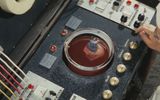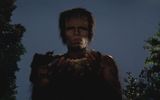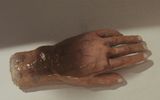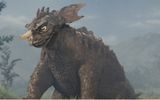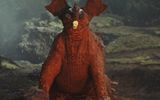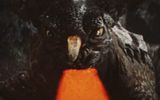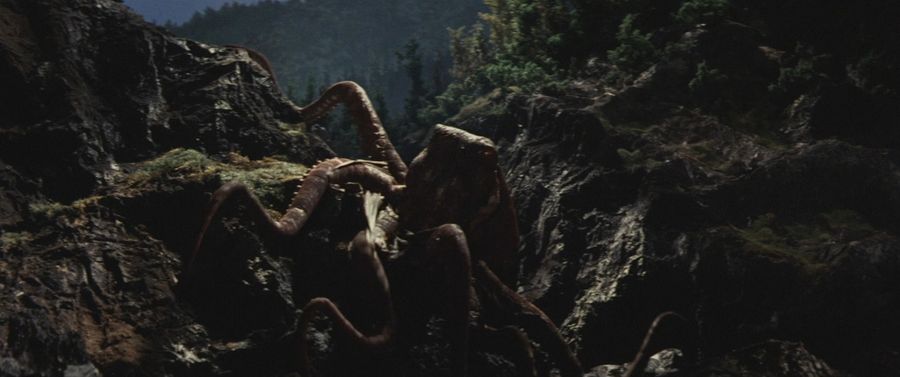SPOILERS
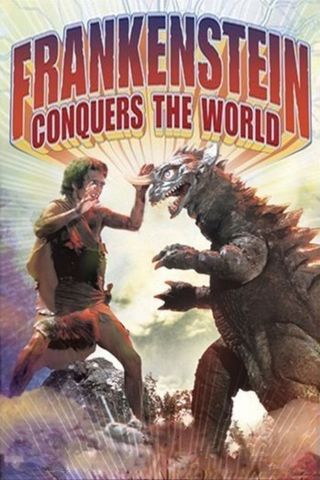
| Added | Sun, 09/05/2021 |
| Release date | 08-08-1965
|
| Original title | フランケンシュタイン対地底怪獣バラゴン
|
| Феномены | |
| References |
Frankenstein vs. Baragon (Japanese: "Frankenstein vs. Baragon") is a Japanese tokusatsu film directed by Ishiro Honda. It is the first Japanese film to feature Frankenstein's Monster, and also features Kaiju Baragon and Oodako the octopus for the first time. Initially, the famous kaiju Godzilla was supposed to appear in the film, but during the writing of the script, he was replaced by other monsters.
The film premiered in Japan on August 8, 1965. The film was such an amazing success that a year later, a sequel was released – "Frankenstein's Monsters: Sanda vs. Gaira".
At the end of World War II, the German doctor Reisendorf secretly sends the living heart of the Frankenstein monster to Japan. The cargo reaches its destination, but is lost in the atomic bombing of Hiroshima.
Fifteen years later, a strange half-wild boy appears in Hiroshima, who wanders the streets of the city at night and hunts for stray dogs and escaped pets. At first, the townspeople ignore him, but after the boy eats a rabbit from the school's living corner, the hunt begins. The boy is caught and taken to be examined by Dr. Kenyishiro Kawaji and his colleagues James Bowen and Shueko Togami.
As a result of the conducted research, scientists come to the conclusion that the boy is none other than the Frankenstein monster who was released, mutated as a result of exposure to radiation after the explosion of the atomic bomb dropped on Hiroshima in 1945. The authorities at first do not believe this opinion and demand proof. Meanwhile, Frankenstein is growing uncontrollably fast and can barely fit in his cage, but he behaves quite calmly.
At the same time, the workers of a coal mine in the suburbs encounter a giant monster Baragon in the depths. The news of the underground monster quickly spreads around the area, but the authorities are not in a hurry to draw conclusions.
One night, a much-grown Frankenstein escapes from his cage and, after wandering around the city for a short time, hides in the woods. During the escape, he tears off part of his arm, which remains in the cage and continues to live for some time. The monster soon grows a new arm. Now there is no doubt in anyone's mind, the monster is indeed a mutated Frankenstein's monster.
Baragon comes out of the mine to the surface and begins to destroy all the villages in the vicinity. However, the authorities do not believe in the existence of a giant underground reptile, and blame the escaped Frankenstein for all the destruction. But Bowen, Togami, and Kawaji are convinced of the monster's innocence. They go to the places of the last destruction and there they encounter Baragon.
After that, the government decides to attack Baragon, but the monster hides from them first in the forest, and then underground. He soon meets Frankenstein at the foot of Mount Ibuki. A battle ensues, with Frankenstein attempting to wring Baragon's neck, but unable to harm him due to the monster's strong armor. Baragon also shoots him with an energy beam (although it does not cause significant damage to Frankenstein). In the end, Frankenstein, using the burning trees, throws Baragon into the abyss.
When, as it seemed, the outcome of the battle is decided, the giant octopus Oodako appears from nowhere. A weakened Frankenstein can't fight him for long. He grabs the octopus, and both monsters fall off the cliff and disappear under the water.
Bowen and Togami, who watched the battle of the monsters, remain confident that Frankenstein is still alive, and his next appearance will not be long in coming.
Phenomena in artwork: Zombies
Frankenstein's monster turns out to be immortal, as are the individual parts of his body. The beating heart of the monster, immersed in a protein nutrient solution, was delivered to the Hiroshima laboratory. After the explosion of an atomic bomb, a humanoid creature grows out of the heart, which the characters of the film later call simply Frankenstein.
The creature looks similar to prehistoric man and has a similar mind. He does not speak, only makes inarticulate sounds, but is able to feel emotions and express gratitude towards those who have been kind to him. The monster creates clothes from the skins and is able to make a fire to cook food.
Frankenstein is immortal as long as he gets enough protein, while his body continuously and rapidly increases in size. It has the ability to regrow severed body parts. Moreover, the severed parts themselves continue to live (and, obviously, are able to grow a new body).
Phenomena in artwork: Land creatures
The unknown creatures in the film are the Baragon (a giant prehistoric underground lizard with a glowing horn that can spew flames) and the huge octopus Oodako.
Log in or register to post comments
